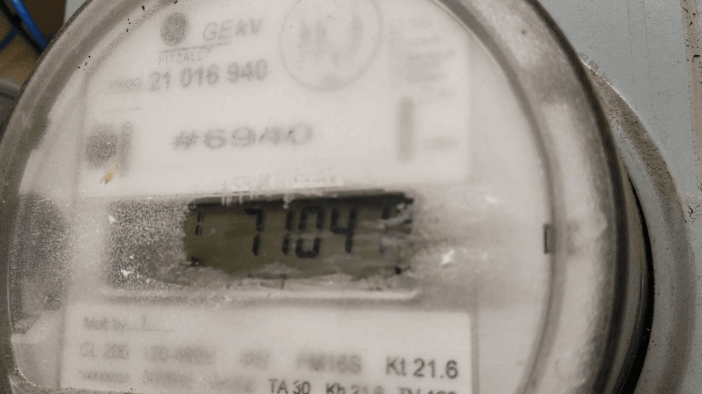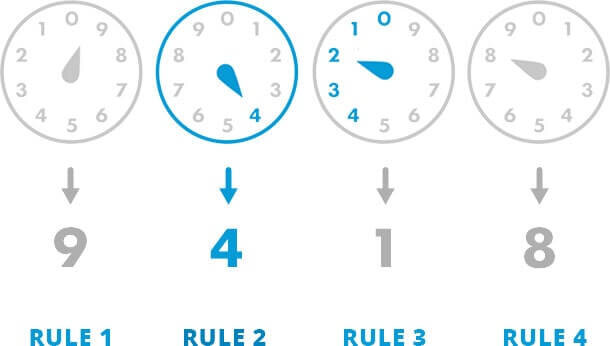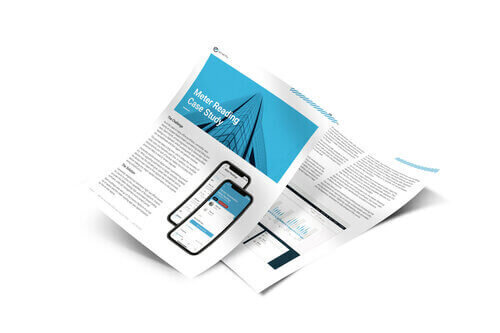10 Things Wrong with Tenant Submetering (And How to Fix Them)
Many commercial real estate (CRE) companies bill their tenants each month based on the amount of electricity, water and/or gas they consume. Generally, this is a smart business move. Not only does it guarantee that management won’t underestimate their tenants’ consumption and end up on the hook for the difference, increasingly savvy tenants are including utility billing as a factor in lease decisions.
There’s just one little problem. The current process of billing tenants for their actual consumption is inefficient, inaccurate, frustrating and costly. Here are the biggest problems with tenant submetering as it stands today and how technology can help alleviate them.
1) Pen and Paper Manual Meter Readings
The hallmark of technology innovation has been the automation of repetitive tasks that used to be performed by humans. Unfortunately, in the world of submetering, things have not changed in decades.
In many CRE portfolios, an individual (either in-house or third party) has to go around to each tenant space in a building and literally write down the numbers displayed on the meters. After the numbers are recorded manually, the data then must be transcribed into a spreadsheet or other document and passed back to the management company.
How to fix this
A much better approach is to do manual meter reads on a mobile app or have devices installed in your building to automatically collect data and transfer the data to a electric submetering software.
-> Demo Now: The Enertiv App to Digitize Manual Meter Reads
2) Meters are Difficult to Read
If having to record meter readings on a clipboard didn’t introduce enough potential errors, old meters can be extremely difficult to read due to broken glass, dirt, obstructions and general wear and tear.
When the meters are displayed with dials (as opposed to digitally), the instructions on how to read them can be quite confusing. Even if this is a normal part of the job for individuals who perform meter readings, it’s not exactly conducive to accuracy when multiplied across thousands of meter readings.
Here’s an example of instructions for reading a ConEd meter with dials:
| RULE 1 | RULE 2 | |
|---|---|---|
| If the arrow is between the numbers, record the smaller number—unless it’s between 0 and 9. Then, record 9. | If the arrow is on a number, look at the dial to the right. If that dial’s arrow is between 9 and 0, subtract 1 from the number the arrow indicates. | |
| RULE 3 | RULE 4 | |
| If the arrow is on a number, look at the dial to the right. If that dial’s arrow is between 0 and 1, record the number as the arrow indicates. | On the rightmost dial only, if the arrow is pointing directly at a number, record that number. |
How to fix this
Instead of complicated meter readings, devices that automatically record consumption can send 100% accurate data to billing software that can visualize the information in an easy-to-understand way.
3) Versioning Issues
Assuming every meter has been recorded correctly, the process is still far from complete or safe from errors. What happens if an error or typo is discovered by the management company?
If they decide to send it back for an updated reading, multiple versions of the same document may exist simultaneously. Multiplied across many buildings and many departments in complex CRE portfolios, this either leads to incorrect data (and thus potential for lost revenue) or valuable man hours being wasted reconciling different versions.
How to fix this
The solution to this problem is simple. By storing everything in the cloud, there are no spreadsheets to send back and forth between departments and only one version of the data.
4) Paper Billing
At this point, the management company hopefully has accurate data in one version of spreadsheets. Now, the figures can be transcribed into invoices and printed out for distribution to tenants.
Each time data must be transcribed from one source to another, there is the risk of human error. This process is both inefficient for accounting and bothersome for tenants, who are increasingly becoming used to paying their bills online.
How to fix this
The better way to manage this process is to have bills automatically sent to tenants online. This also makes payment easier by closing the gap between how tenants pay and where they receive their bill.
Featured Case Study
Increasing Recovery from Submetered Tenants by $100,000
A 480,000 sq ft office building in New York had been doing submetering with a legacy provider for many years. The on-site teams had always had a hunch that they were undercharging tenants for their submetered usage but there was no online portal to get transparency.
Enertiv’s utility billing analysts identified opportunities to significantly increase recovery from tenants.
5) Binders on Shelves
Now that the bills have been printed and sent to the tenants, accounting is done, right? Not so fast, copies of the bills must be stored for record keeping purposes.
This leads to binders full of old billing statements just sitting on shelves. If there turns out to be a reason to look at them, sifting through the piles of paper makes for a daunting task.
How to fix this
Software dedicated to tenant billing allows you to review any tenant’s past bills instantly and from anywhere. Even the tenants themselves can have access to a dedicated portal so they can do the same.
6) Slow Recovery Rate
The time it takes to complete these manual processes eventually adds up. For most CRE portfolios that have tenant submetering, there is an average delay of 30-45 days between the end of the billing period and when costs get recovered.
These cost outlays could be put towards productive investments if they were recovered more quickly. Instead, slow recovery means that cash flow is stifled and investments are delayed.
How to fix this
When tenant consumption data is uploaded to the cloud in real time, electric sub metering bills can be sent the moment a billing period is over and costs can be recovered in a matter of days instead of a matter of weeks.
7) No Integration with Current Systems
When bills are finally paid by tenants, the updated status of the bill must be input back into the accounting or property management software.
The disconnect between tenant billing and normal accounting adds additional work and duplicates effort unnecessarily.
How to fix this
A dedicated tenant billing software can connect to your current accounting or property management software to streamline efforts and make the process seamless.
8) Move-ins & Move-outs
When a process isn’t dynamic, it doesn’t do well with unusual situations such as move-ins and move-outs.
In these cases, it would be ideal to invoice for a portion of the billing period. But if you won’t get a reading until the end of the month, it quickly becomes an estimation game, which is not good for property managers or tenants.
How to fix this
Transition to a dynamic invoicing process, so you can easily prorate bills for exact move-in and move-out dates.
9) No Tenant Engagement
As tenants become more knowledgeable about energy costs, they are expecting to be able to have transparency into their bills. They want to know why their bill is a certain amount, and ideally, what they can do to reduce it.
Beyond that, the utility bill is something that every tenant must look at once a month, this is an opportunity for tenant engagement and marketing that the vast majority of portfolios miss out on.
How to fix this
Instead of simply providing bills to tenants, engage them with web and mobile apps that provide transparency into their usage. By providing more details and comparing their usage to neighbors, the tenant billing process can be turned from a hassle into an amenity that commands higher market prices.
Featured Case Study
Digitizing Meter Readings and Strengthening Tenant Partnerships
As is the case in many office portfolios, ownership was relying on a paper-based tenant submetering and billing process. Each month, on-site engineers had to transcribe meter readings to a clipboard, which subsequently was transcribed into spreadsheets and then again into generic invoices.
Enertiv not only streamlined the process, tenant partnerships were strengthened.
10) Lack of Transparency
Showing a commitment to sustainability can be a very effective way to attract tenants and command higher market prices.
Providing amenities such as real-time data and notifications when things get left on can be a very effective way to fulfill this commitment, but is simply impossible with the traditional submetering and billing process.
How to fix this
Management portals that are updated with real-time consumption data can be used to better understand where operating costs are going, view trends over time and let tenants compare themselves to neighbors.
Enertiv’s electrical submetering solutions has solved these problems for some of the biggest real estate organizations in the world. Request a demo today to see how it works!





